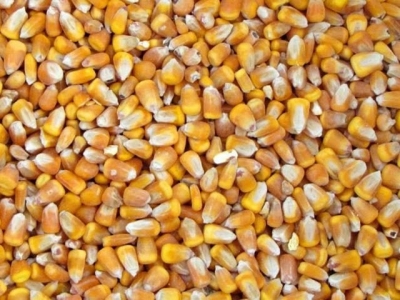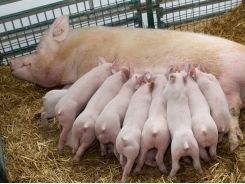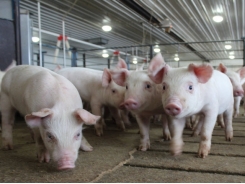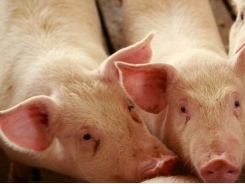Formulating pig, poultry diets: a nutritionists preferences

Each nutritionist has a favorite set of feedstuff book values, and here I present my own, based on my experiences as a field nutritionist and consultant — use with caution!
One of the most intriguing questions arising in the study and practice of bromatology, otherwise known as feed science and technology, is, which of the published tables of nutrient analyses are best? This question has been asked in almost every discussion I have had with clients, worldwide. It is indeed a question that intrigues me since my undergraduate years.
Each nutritionist has a favorite set of ingredient nutrient values.
We all realize, of course, that only the actual wet-chemistry analyses of a truly representative sample of the ingredient in question can serve as the best estimate of the nutritive value of the whole lot. Now, this is an ideal situation that often finds no application in real commercial practice. In most cases, ingredients are utilized long before laboratory analyses reports become available. On the other hand, real-time data, such as those generated by near-infrared (NIR) systems, are often impractical as they tend to depend on the accuracy of the original dataset, based on which a “curve of accuracy” has been constructed. In other words, they can be as good or as bad as table values.
Despite modern technology (NIR) and complex quality assurance plans (lab results), nutritionists do need to use “table” values where actual data are missing, long coming or simply untrustworthy. Quite often, these table values are adjusted based on empirical experience to reflect a slightly different profile for a well-known ingredient or local knowledge.
In my opinion, no single dataset can be used worldwide.
Finally, it should be noted here, that each nutritionist has a favorite set of ingredient nutrient values. This is due to good experiences with reliable databases that tend to agree with local circumstances. In my opinion, no single dataset can be used worldwide. In contrast, each nutritionist should have a group of such tables that can be consulted depending on the occasion, as each table can offer a slightly different perspective and depth of analysis.
Personal preferences
As a field nutritionist and consultant, I have come to rely on the following sets of table values when it comes to formulate diets for pigs and poultry for clients around the world.
Institut national de la recherche agronomique (INRA) (French National Institute for Agricultural Research)
Tables de composition et de valeur nutritive des matieres premieres destinees aux animaux d’elevage
This is my primary source, as I tend to follow the French school in terms of nutrient requirements (for pigs only, as I rely on breeder recommendations for poultry). Plus, John Noblet, of INRA fame, has been the pioneer behind a very reliable pig net energy system, which has been copied many times, but never improved upon. I have been using these values since 2000 for pigs and poultry, and my only complaint is that they have not been updated, yet.
National Research Council
Nutrient Requirements of Swine
I used to consult the previous edition (1998) quite often when it came to nutrient requirements for pigs, especially sows and growing-finishing pigs, but since the new edition’s (2012) switch to a modeling approach, I only use this publication for the extensive array of ingredient analyses. There is a similar book on poultry (1994), but I consider it only as a historical reference anymore.
Fundación Española para el Desarrollo de la Nutrición Anima (FEDNA)
Tablas de composition y valor nutritivo des alimentos para la fabrication de piensos compuestos
Some unusual feed ingredients can be found in this 2003 edition, and some extra nutrients are considered. I rarely use this book anymore, unless I cannot find something elsewhere.
Variability in nutrient analysis
One great feature of the more modern tables of nutrient analyses is the addition of variability measurements. Analytical variability among chemical laboratories can be as great as between two batches of the same ingredient, according to a recent report by NCR-42 (1999). In an investigation involving 22 analytical laboratories, 16 sources of corn and soybean meal were analyzed for dry matter, crude protein, calcium, phosphorus, amino acids and selenium. Nutrient composition varied greatly by source of origin and with few exceptions (i.e., crude protein); variability was as great between laboratories.
Selenium was found to have the greatest variability with values ranging from 0.02 to 0.29 percent (a difference of 1,350 percent) in corn, and from 0.08 to 0.95 percent (a difference of 1,088 percent) in soybean meal. Calcium concentrations in corn and soybean meal (regular or high protein) were also quite variable and affected mostly by source and less by analytical laboratory.
The significance of this work is that not only feed and ingredients need to be frequently assayed for major nutrients but also that a reliable analytical laboratory must be carefully selected. Some laboratories will definitely perform certain analyses with greater accuracy and repeatability than other laboratories.
The take-home message here is that when I expect a large variability in using a certain ingredient (based on book values), I tend to be somewhat more generous in dietary nutrient specifications — or alternatively ask the client to increase the frequency of laboratory analyses.
Recommended maximum inclusion levels
Maximum inclusion levels for feedstuffs are usually needed only for those ingredients that pose a threat in animal health and (or) growth performance when they are used in excessive concentrations. These ingredients are usually relatively inexpensive, and thus, a balance is often sought between feed cost and animal performance. Setting maximum limits for ingredients that are relatively safe (except for unbalancing diets) are redundant, but it is often seen in older publications, and usually represents common practice rather than upper limits of tolerance.
Defining the maximum inclusion level for each possible ingredient is quite a risky task. First, ingredient quality may vary considerably from batch to batch for a great number of reasons that can often be unpredictable or even unknown. Thus, lowering maximum inclusion levels for ingredients of questionable quality is often a good strategy, albeit not always the least-cost one. Second, research is constantly revealing that advances in processing methods and plant genetics result in improved quality of several ingredients previously thought challenging to use (for example, canola versus rapeseed). Third, tolerance to anti-nutritional factors, usually present in high concentrations in several ingredients, increases with age, maturation of the digestive system, enhanced gut health and high feed intake.
Basic guidelines for several feedstuffs are proposed in several publications (the Spanish FEDNA tables are my favorite based on Professor Mateo Gonzales’ vast experience). On a more personal note, I tend to be rather conservative when faced with unknown quality ingredients and quite liberal when I find good quality feedstuffs. For example, I tend to limit the use of DDGS of unknown origin and analysis, but I will maximize use of breakfast cereal fines when I can find them, because they have always proven to be of exceptional quality.
Có thể bạn quan tâm
Phần mềm

Phối trộn thức ăn chăn nuôi

Pha dung dịch thủy canh

Định mức cho tôm ăn

Phối trộn phân bón NPK

Xác định tỷ lệ tôm sống

Chuyển đổi đơn vị phân bón

Xác định công suất sục khí

Chuyển đổi đơn vị tôm

Tính diện tích nhà kính

Tính thể tích ao hồ




 Denmark sees progress in R&D on zinc alternatives…
Denmark sees progress in R&D on zinc alternatives…  Dirty pigs need more dietary threonine
Dirty pigs need more dietary threonine